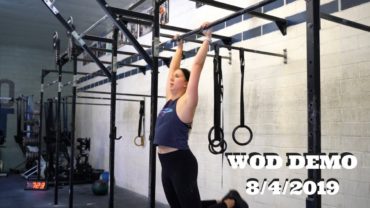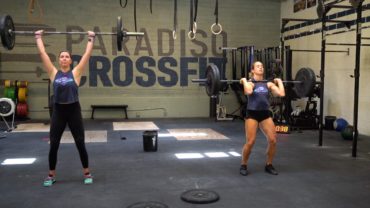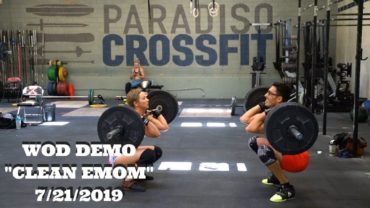The Wheel Analogy
Friday, January 18, 2013
Mobility/Warm up
Row 500m / Jog 400m
DROM
Overhead Band Distraction
Posterior Chain Floss
Groiners
Classic Programming:
Strength:
Every 30 seconds for 5:00 (22 total reps) – 2 moderate/heavy Deadlifts
Notes: The weight should be challenging but form should be PERFECT throughout the 5 minutes. These are not touch and go reps. Be sure to reset at the bottom for each rep.
Conditioning:
12 Burpee Pull Ups
40 Jumping Lunges (alternating)
25 Wall Balls
9 Burpee Pull Ups
30 Jumping Lunges
15 Wall Balls
6 Burpee Pull Ups
20 Jumping Lunges
5 Wall Balls
-12 minute time cap-
Notes: The combination of lunges and wall balls will leave your poor quads pretty sore. Scale down the lunges if you are just starting and make the time cap!
Advanced Programming:
Strength:
Every 30 seconds for 5:00 (22 total reps) – 2 banded Deadlifts @ 55% Bar Weight + Band Tension
Notes: The bar should be loaded with 55% of the 1RM Deadlift + a band to make the lift heavy but not so much tensions that the athlete can not maintain a neutral spine. These are not touch and go reps. Be sure to reset at the bottom for each rep.
Conditioning:
9 Bar Muscle Ups
50 Jumping Lunges (alternating)
30 Wall Balls (20/14)
7 Bar Muscle Ups
40 Jumping Lunges
20 Wall Balls
5 Bar Muscle Ups
30 Jumping Lunges
10 Wall Balls
-12 minute time cap-
Cool Down:
Couch Stretch
Sampson Stretch
Pigeon
Adam, aka “13”, demos the banded deadlift.
“Motion is created by the destruction of balance, that is, of equality of weight, for nothing can move by itself which does not leave its state of balance, and that thing moves most rapidly which is furthest from its balance.” -Leonardo Da Vinci
The above quote is the foundation of the Pose Method of running: that forward motion is not created by applying force and pushing off the ground, but instead by leaning forward, destroying balance, and simply falling. The farther from balance, or the greater the lean, the greater the effects of gravity and the faster you will go. Sounds simple in theory, but it can be quite hard in to implement in practice because our bodies crave stability and balance. Think about anytime you accidentally fall or become weightless. Most people immediately turn to their reflexes without thinking to save themselves from danger. You put your foot or arm down without any hesitation in order to restore balance. Therefore, the Pose Method of running is learning to accept psychologically the act of falling and maintain it through efficient movement.
How can we maintain falling and the running cycle efficiently? Let’s turn to the analogy of a wheel for clues. First, let’s establish that the wheel is extremely efficient at forward movement, more efficient than a human. What’s easier, carrying the 45 pound plate or rolling it to your barbell? A wheel has no vertical oscillation, so it doesn’t waste any energy moving up or down while moving forward. Think of a car, where the body stays relatively still while the wheels turn underneath, and the distance between the ground and the car stays constant. Another property of the wheel is that the general center of mass (GCM) is always directly over the contact point of support with the ground. The weight of the car is always above the tires, never in front or behind, so there is no breaking effect. If a nail were sticking out of the tire it would hit the ground first, ie landing in front of the GCM of the car, have a slight breaking effect, and reduce the efficiency of the entire system. Finally, the wheel has uninterrupted change of support with the ground as it turns. The faster the turnover of the wheel (cadence), the faster the change of support, and the faster the speed of the whole system.
Now let’s extend the wheel analogy to a unicyclist and see if everything holds true and how it relates to running. There is no wasted energy with up and down movement. The body stays still while the wheels and legs turn underneath, like our car analogy above. The general center of mass of the rider is directly over the contact point with the ground so there is no breaking effect. Forward movement is initiated by a lean and then matched by a pedaling of the feet to prevent the rider from falling on his or her face. The speed is directly related to how fast the tire is turning (ie how quickly support is changed) which is controlled by the speed of pedaling. Stride frequency, not length, is the key to speed and is maintained at a cadence of 180+ steps per minute in running. At the bottom of the pedal, what position is the rider in? Body is in a straight line, with legs bent, the foot is directly under the body with weight on the ball of the foot. Take away the unicycle, and the rider is in the Figure-4 running Pose. While pedaling, if you take away the unicycle, the rider is Pose running. Our bodies are the car, remaining still, while our legs are the tires changing support efficiently underneath.
Take a look at the video of our very own Sara J riding her unicycle to see it for yourself! She is a great athlete and a great runner. The only cue I gave her before filming was to pretend she was pedaling, and her form was spot on. Everything is everything…Enjoy!
















